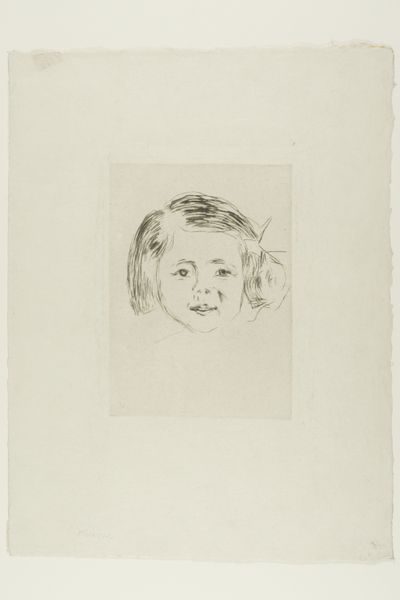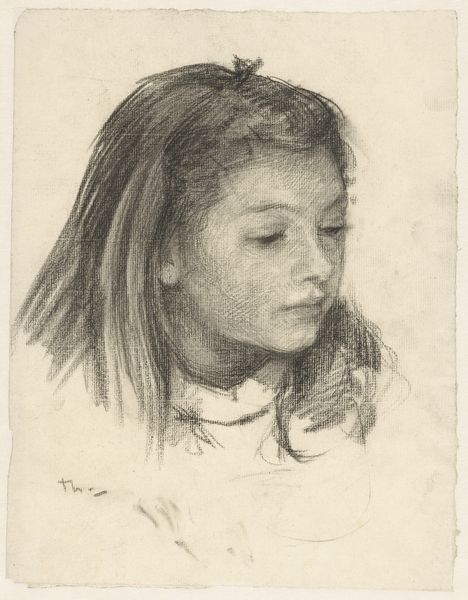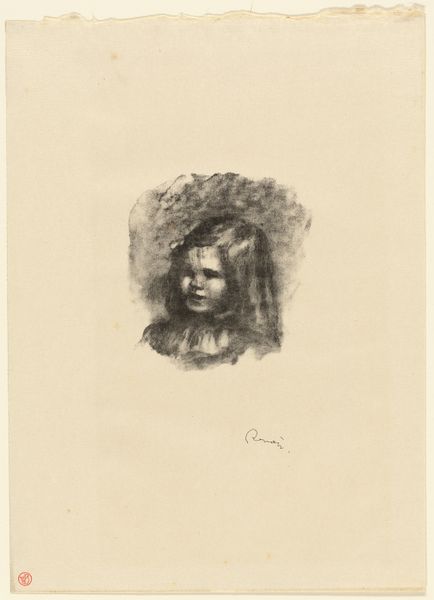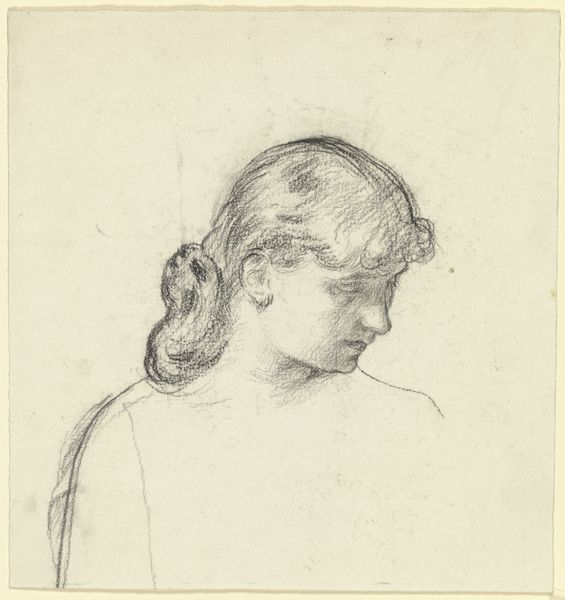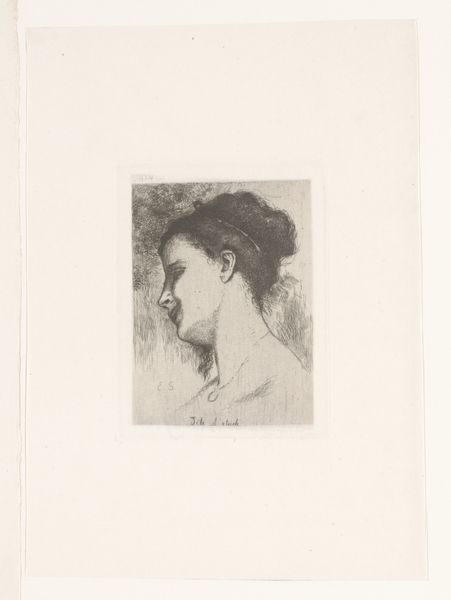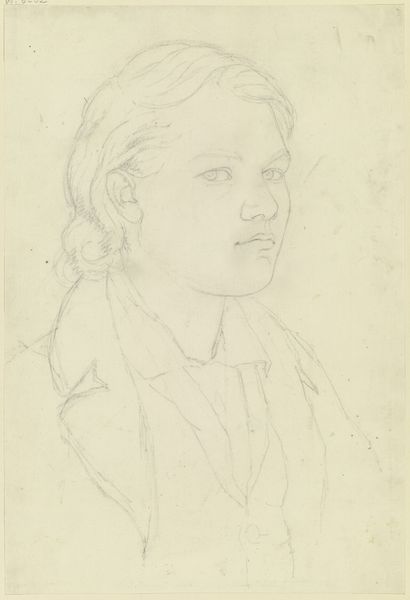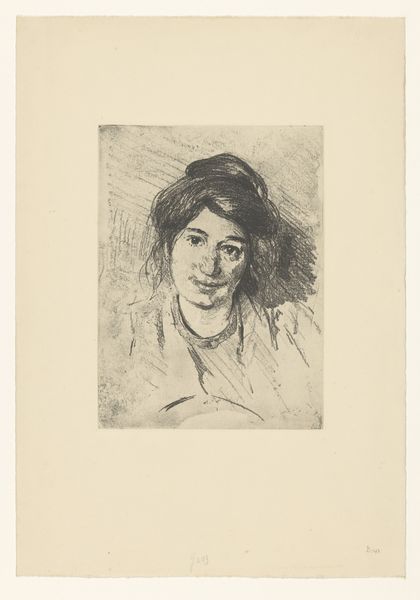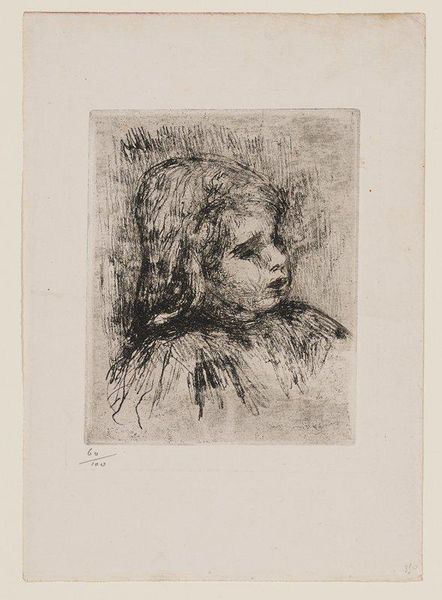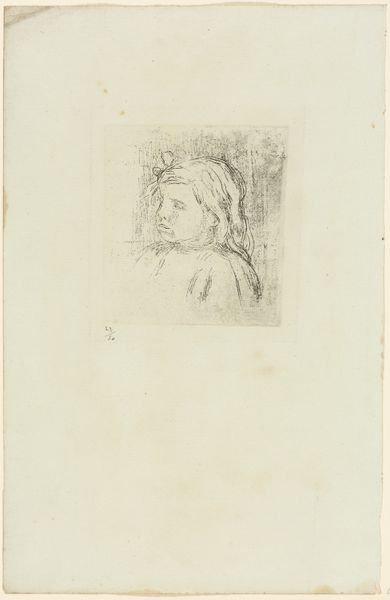
drawing, print, etching, paper, graphite
#
portrait
#
drawing
# print
#
etching
#
figuration
#
paper
#
graphite
#
realism
Dimensions: height 112 mm, width 92 mm
Copyright: Rijks Museum: Open Domain
Curator: Looking at this subtle work, it's Joan Berg's "Hoofd van Meisje" from 1872, housed here at the Rijksmuseum. Made with etching, graphite, and ink on paper, it embodies the artistic sensibilities of its time. Editor: There's such quietness about it, isn't there? The softness of the lines almost makes it seem like a fleeting thought, a memory just out of reach. Curator: Absolutely. Berg, working within a period defined by strict social norms, captures this young girl with remarkable intimacy through relatively accessible methods. The mass-produced quality of prints like this speaks volumes about its dissemination within bourgeois culture at the time. Editor: You know, when I consider the materiality, the etching technique used—the way the lines create the image—it feels very labor intensive for such a small artwork. How does the manual labour aspect of its production challenge, or reinforce, ideas of 'high art' versus craft in its period? Curator: Good question. The realism evident challenges academic traditions dominant in fine arts institutions of that era. Prints democratized art, placing it within reach of middle-class consumption. The very accessibility challenged notions of art existing exclusively for the elites. Editor: This almost looks more like a sketch for a larger composition, or even an intimate glimpse that subverts any idea of staged portraiture as it allows for a view on private lives that wouldn’t be readily available to broader audiences otherwise. How would period exhibitions have framed pieces like this—would there have been any tension present because of it? Curator: It depends on where it was exhibited. In a private gallery, possibly not so much, as it would be tailored to its cultivated clientele. In larger institutions there may have been, especially those trying to negotiate art historical lineages while expanding public engagement. Editor: I never cease to marvel at art’s inherent duality: existing both as an object of consumption and also acting as silent commentary on social mores. Curator: A wonderful point. Perhaps we are now seeing why this work retains such emotional impact centuries on.
Comments
No comments
Be the first to comment and join the conversation on the ultimate creative platform.
